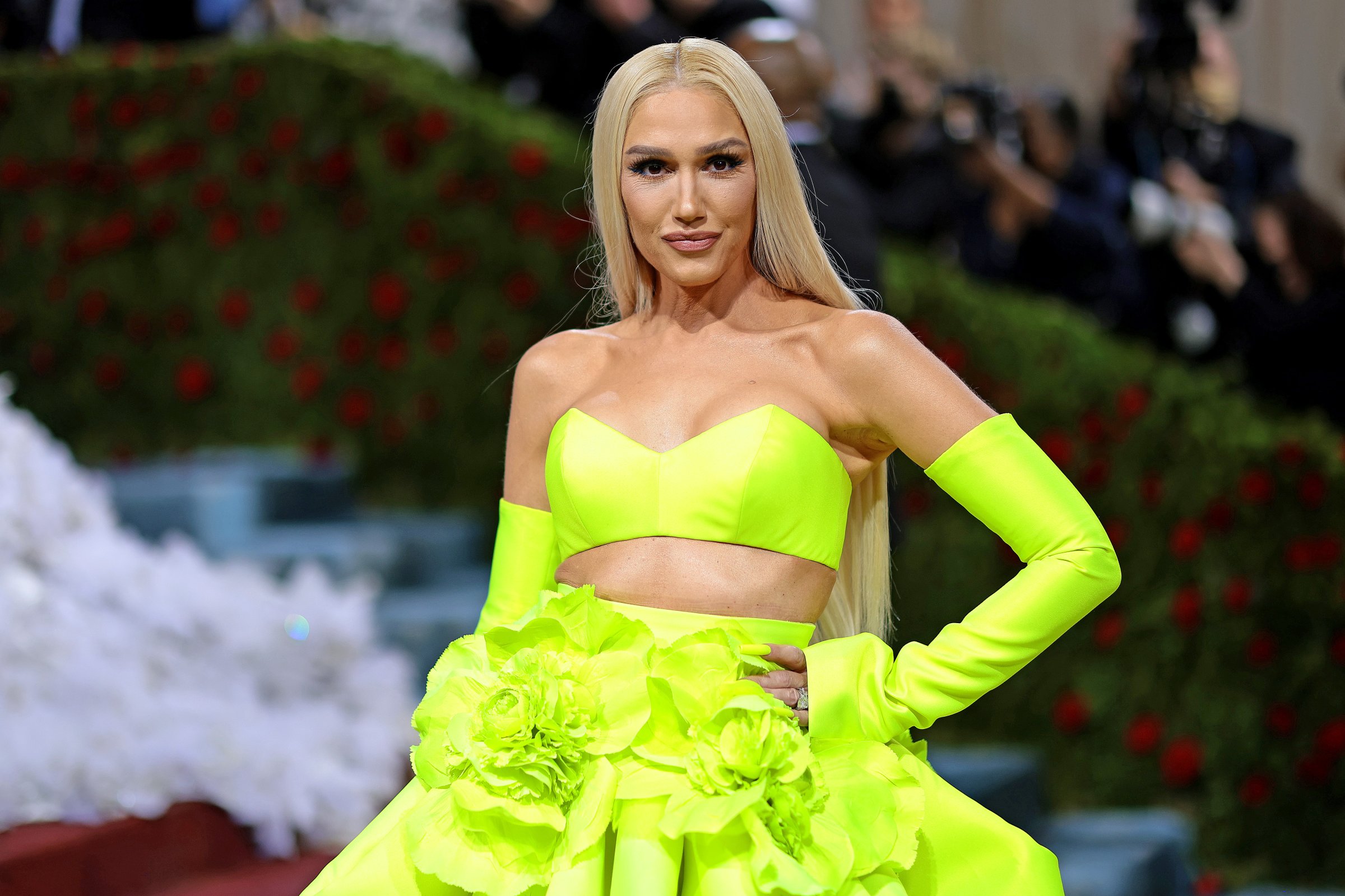
When Gwen Stefani performed at Disneyland this past Christmas, her decision to sing “Feliz Navidad” was the subject of multiple jokes online. “Her commitment to other cultures is unmatched,” one person tweeted. Others joked that she is their “favorite white woman of color” and “cultural appropriation is her middle name.” For years, Stefani’s work has borrowed from other cultures in ways that have led to accusations of cultural appropriation. In a recent interview with Allure, she was asked about the fragrance line she released in 2008, Harajuku Lovers, which like her 2004 album Love.Angel.Music.Baby. and personal style at the time heavily incorporated the Japanese subculture Harajuku. Stefani, who is Italian American, doubled down and said, “I’m Japanese.”
As she explained to the interviewer, her father worked at Yamaha and traveled between California and Japan for 18 years. “She then explained that there is ‘innocence’ to her relationship with Japanese culture, referring to herself as a ‘super fan,’” Allure’s Jesa Marie Calaor writes. In essence, Stefani was describing what she feels is cultural appreciation. “‘[It] should be okay to be inspired by other cultures because if we’re not allowed then that’s dividing people, right?’” she asked.
Cultural appropriation is not new, but awareness of its frequent occurrence in pop culture has been heightened over the past few decades, and particularly since social media has existed as a platform where users can name it when they see it. Stefani’s recent comments, and their failure to acknowledge decades of understanding about the distinctions between appropriation and appreciation—especially when someone’s profiting heartily—should be understood within the context of her broader career.
The difference between appreciation and appropriation
Britannica offers up a straightforward definition of cultural appropriation: “Cultural appropriation takes place when members of a majority group adopt cultural elements of a minority group in an exploitative, disrespectful, or stereotypical way,” it states. Examples of this include Victoria’s Secret models donning Native American headdresses on the runway and Katy Perry dressing up as a geisha for a performance at the American Music Awards. There is often a performative aspect with little substance behind it.
Appreciation, meanwhile, can be as simple as learning a new language or cooking a dish from a culture other than one’s own. “Full appreciation involves understanding,” James Young, author of Cultural Appropriation and the Arts, tells Harper’s Bazaar. “Unobjectionable appropriation begins with genuine appreciation, which involves understanding. If one understands a cultural product, one is unlikely to use it in offensive or otherwise objectionable ways.”
In the case of Stefani’s Harajuku Lovers fragrance line, for example, it’s critical to consider the commercial aspect. Especially within the worlds of fashion and music in which Stefani trades, America has a long history of white artists and entrepreneurs capitalizing on influences from other cultures, often Black American culture, all the way to the bank (see, for starters: American popular music and streetwear).
Stefani’s fraught relationship with appropriation
Accusations of cultural appropriation date back to the early years of Stefani’s career. Aside from her appropriation of Japanese culture in the L.A.M.B. era—which included the employment of four Japanese and Japanese American backup dancers known by the pseudonyms Love, Angel, Music, and Baby, who Margaret Cho once equated to a “minstrel show”—she has been accused of appropriating Latine, South Asian, Native American, and Black culture, the latter happening as recently as last year.
In the 1990s, she regularly wore Bantu knots in her hair, which derive from the Zulu tribes in southern and west Africa, and bindis, which originated on the Indian subcontinent, on her forehead. In 2005, she was accused of appropriating Latine culture in her music video for “Luxurious,” in which she dressed like a Chola. She wore a feathered headdress and traditional indigenous jewelry in the 2012 video for “Looking Hot” with No Doubt. After receiving criticism, Stefani and the band released a statement apologizing for the cultural appropriation in the video, saying they never meant “to offend, hurt or trivialize Native American people, their culture or their history.” Last year, in the music video for Sean Paul’s “Light My Fire,” which features Stefani and Shenseea, the 53-year-old singer dons dreadlocks, which are widely considered to be cultural appropriation when worn by non-Black people.
The relationship between intention and appropriation
In her conversation with Allure, Stefani defended her affinity for Japanese culture by saying that she’s a “super fan.” Appropriation can still be disrespectful even if the person committing the act intends to show appreciation. Intention aside, the appropriation itself can be seen by people who do lay claim to that culture as a cheapening or watering down, a way to boost or add intrigue to one’s image without having the lived experience or community support.
Although conversations about this topic are now frequent, and have certainly led to more forethought on the part of artists, and even everyday people, who might for example in the past have worn an offensive costume, appropriation persists. (See: Hailey Bieber’s “Brownie glazed lip” trend, white TikTokkers passing off Black beauty trends as their own). Although society has progressed in possessing the vocabulary to understand and call out cultural appropriation when it occurs, Stefani’s comments are a reminder that there’s much work still to be done.
More Must-Reads from TIME
- Why Biden Dropped Out
- Ukraine’s Plan to Survive Trump
- The Rise of a New Kind of Parenting Guru
- The Chaos and Commotion of the RNC in Photos
- Why We All Have a Stake in Twisters’ Success
- 8 Eating Habits That Actually Improve Your Sleep
- Welcome to the Noah Lyles Olympics
- Get Our Paris Olympics Newsletter in Your Inbox
Write to Moises Mendez II at moises.mendez@time.com